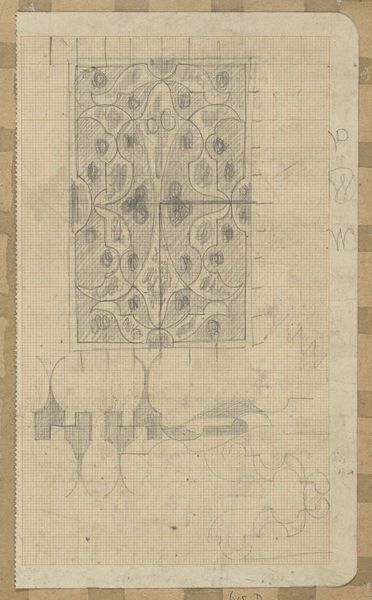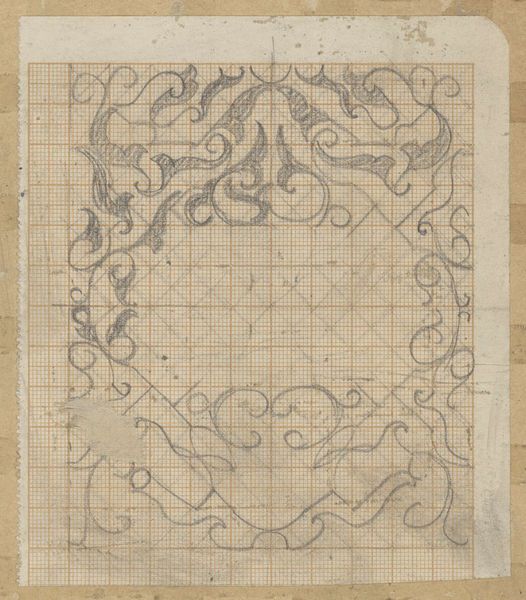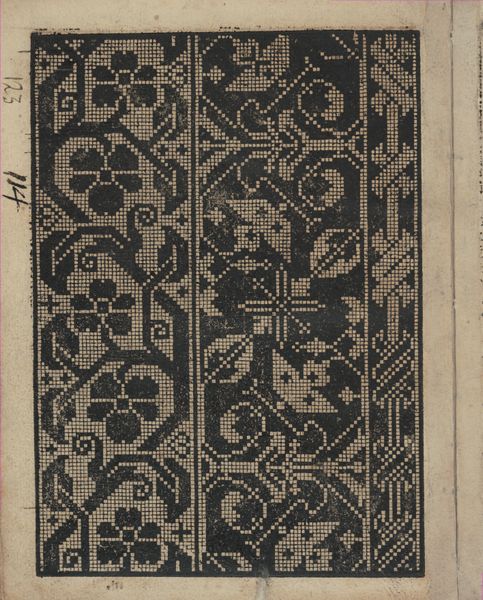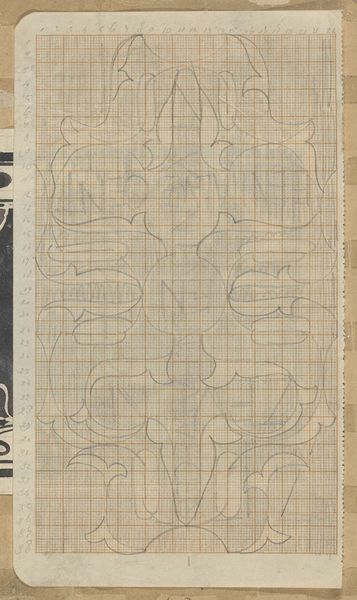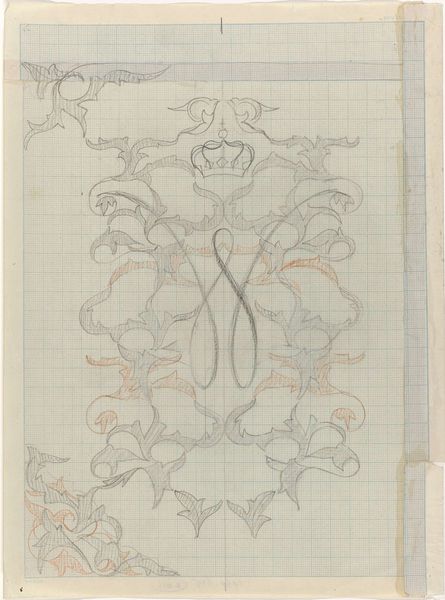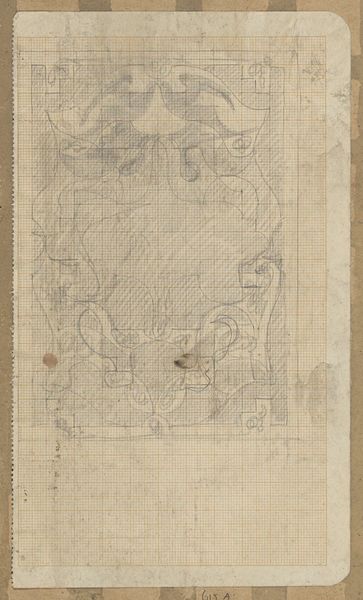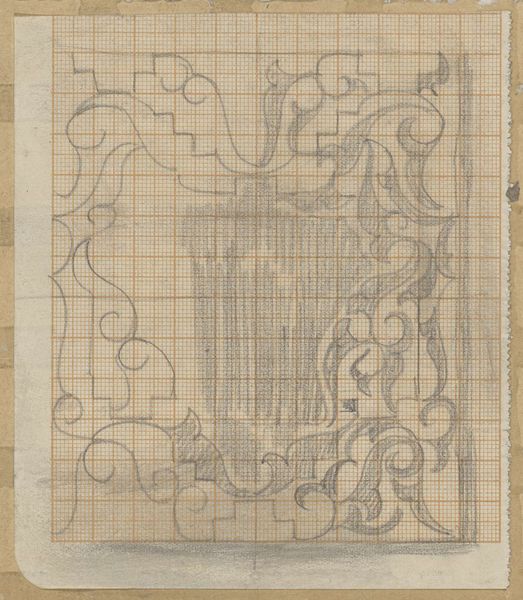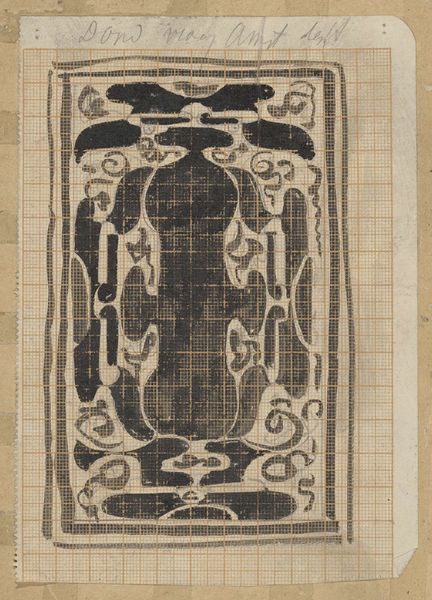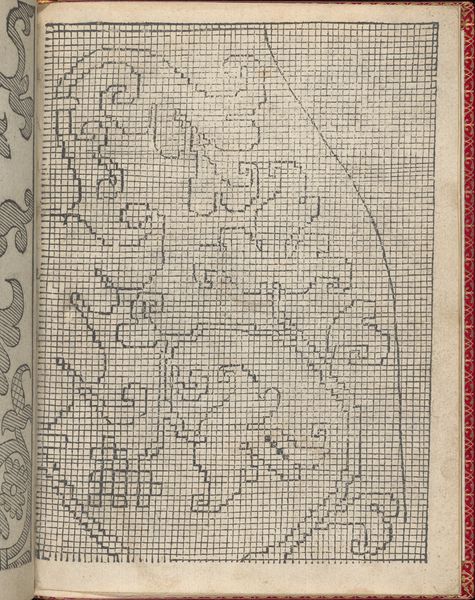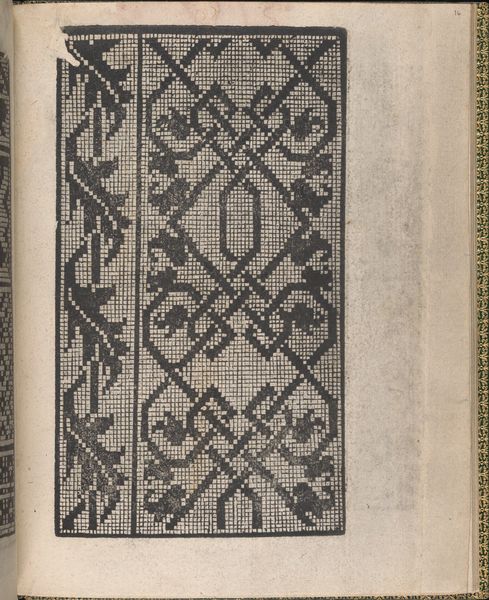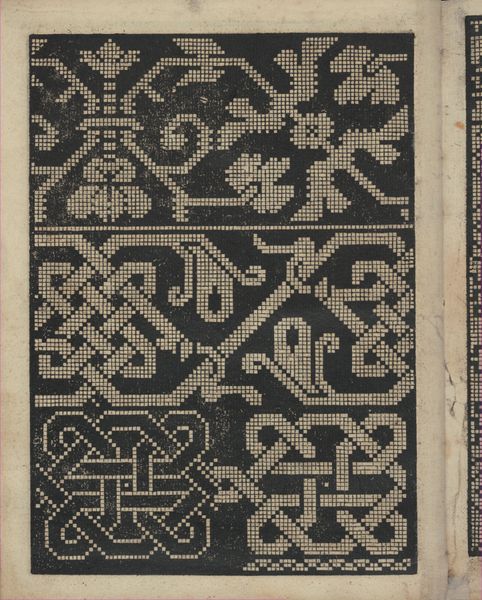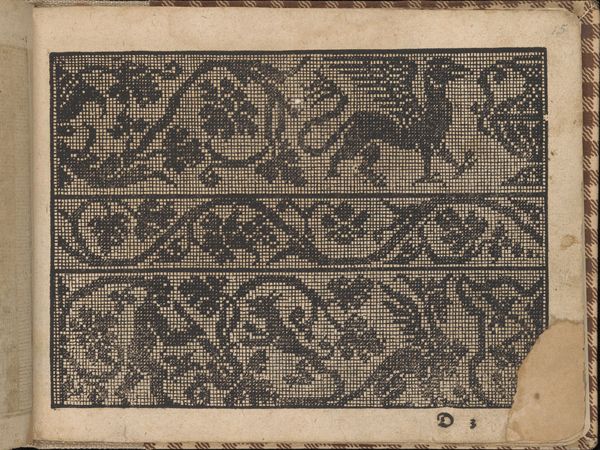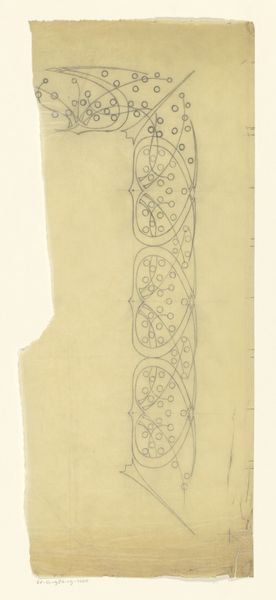
drawing, paper, pencil
#
drawing
#
aged paper
#
toned paper
#
sketch book
#
paper
#
tea stained
#
form
#
personal sketchbook
#
journal
#
fading type
#
geometric
#
pencil
#
line
#
sketchbook drawing
#
storyboard and sketchbook work
#
sketchbook art
Dimensions: height 211 mm, width 121 mm
Copyright: Rijks Museum: Open Domain
Curator: What catches my eye immediately is this…dreamy quality. Like looking at something through fog. Editor: That's a fitting impression. What we have here is a design study, rendered in pencil on aged, almost tea-stained paper, titled "Decoratief ontwerp met een dier." It’s from the period of 1874 to 1945 and comes to us from Carel Adolph Lion Cachet. It feels like a fragment from a much larger ambition. Curator: Absolutely. The grid beneath the drawing gives it a strangely technical vibe against those swirling, organic shapes. A little beastie hovers in the middle! It’s as if he’s caught between worlds. Did Lion Cachet usually do preparatory work on graph paper? Editor: Not always, but the use of grid paper is definitely visible across the artist's journals, where one can find examples of architectural blueprints for structures designed in oriental style or art nouveau typeface lettering. The tension you sensed – between the technical and the fanciful – probably stemmed from Cachet's professional career, where as interior and graphic designer, he aimed at harmonizing modern life with more old-fashioned taste for ornamentation. Curator: It makes you think about what designs become, right? The ideas that make it to the grand ballroom and those that languish in the sketchbook. Do you think this critter would have stood a chance? Editor: Considering Cachet designed many opulent interiors on the service of ship companies during his later years, I would say it could. There are certainly precedents of stylized deer or gazelle incorporated to the larger composition. In looking closely at how the decorative form and creature’s pose share in equal parts naturalistic curves and geometric stylization, this draft probably could find its place in Art-Deco themed environments of early 20th century. But that's, of course, just speculation. Curator: It makes me appreciate even more the vulnerability of it, here on paper, decades after being drawn. An echo of creativity. Editor: Perhaps that's the magic of design drawings: potential, pregnant with futures both realized and unrealized. The ghost of what could be. Curator: Beautifully put! It's pieces like this, seemingly minor, that can open up entire avenues of thinking. Thank you.
Comments
No comments
Be the first to comment and join the conversation on the ultimate creative platform.
